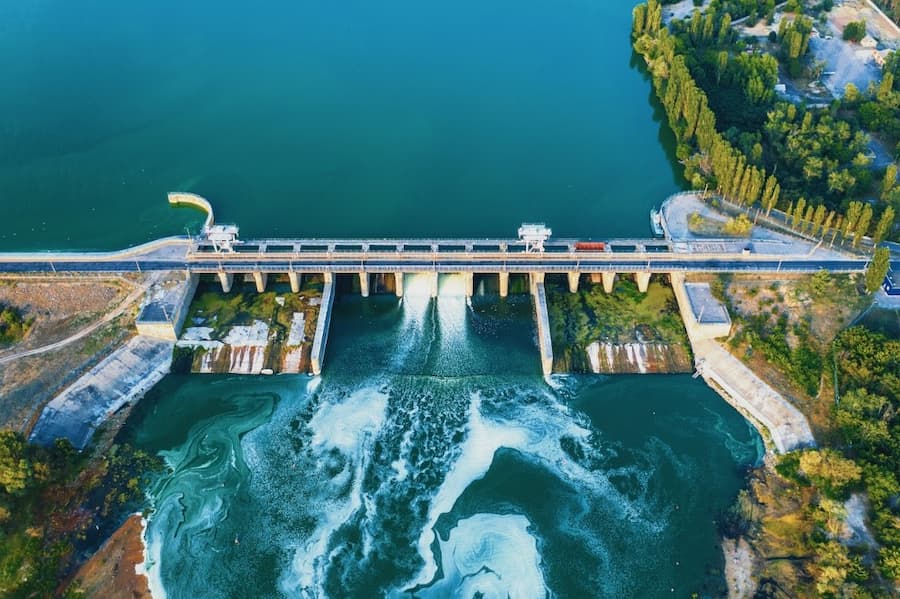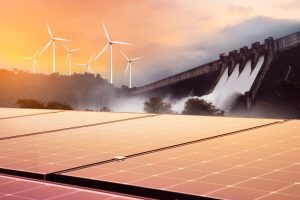 Hydroelectric power stations stand tall as marvels of engineering, using the force of flowing water to generate sustainable energy. From dampening vibrations in turbines to enabling precise power regulation in control systems, various springs work together to allow these energy giants to work efficiently, supporting a number of industries in their goal of moving towards a greener future.
Hydroelectric power stations stand tall as marvels of engineering, using the force of flowing water to generate sustainable energy. From dampening vibrations in turbines to enabling precise power regulation in control systems, various springs work together to allow these energy giants to work efficiently, supporting a number of industries in their goal of moving towards a greener future.
But what are the main spring designs used in hydroelectric power stations? And how do they contribute to the functioning of turbines and control systems? Our experts are using our extensive experience in spring manufacturing to answer all your questions in this blog.

Hydroelectric Power Generation, Essential Components, and Springs in Turbines
Before moving on to springs, we need an introduction to hydroelectric power generation. This process focuses on converting the kinetic energy of flowing water into electricity, a modern concept that finds its roots in ancient watermills. The key components of hydroelectric power stations include turbines, generators, and control systems, each essential across the entire energy conversion process.
Turbines, probably the most characteristic visual feature of these systems, are responsible for converting water motion into mechanical energy. Within these turbines, springs are the key players in maintaining operational efficiency, starting with dampening vibrations. As water flows through the turbines, it can create turbulent forces that, if unchecked, may lead to excessive vibrations. Springs here are buffers, absorbing and softening these vibrations, resulting in potential damage prevention to the turbine components.
On top of that, springs extend the overall longevity of turbine components by acting as shock absorbers; as the constant exposure to high-velocity water flow and varying pressures put immense stress on turbine blades and shafts, springs come in to reduce the impact of sudden pressure changes, providing a protective layer for these critical components. Power generation also benefits from such an intervention, remaining reliable and constant.
How Springs Work in Control System Mechanisms
If turbines are the arms, control systems are the brains behind hydroelectric power stations. They take care of several tasks, like regulating the flow of water, monitoring electricity generation, and maintaining the general stability of the system. It’s in various mechanisms within control systems that springs come into play as major elements. For instance, one notable application is the governor mechanism, where springs assist in precise power regulation.
Governors are in charge of controlling the speed of the turbines by adjusting the flow of water. Springs working within this mechanism act as tensioning devices, allowing for fine adjustments in prompt response to changes in electricity demand. This, as we’ll see more in detail below, makes the turbines’ rotational speed steady, optimising energy output and contributing to grid stability.

The Variety of Springs in Hydroelectric Power Plants
Springs in hydroelectric power plants come in various shapes and sizes to meet specific functions and fulfil requirements. Here, we’ll learn how a variety of our spring types play distinctive parts in different mechanisms throughout the plant.
Torsion Springs
Torsion springs are strategically employed in control systems because their unique ability to provide torque proves invaluable for making precise adjustments easy. The controlled application of torque guarantees that the complex mechanisms within the control systems work with accuracy, contributing to the smooth, uninterrupted functioning of the hydroelectric power generation process.
Compression Springs
Compression springs are essential elements commonly found in turbine assemblies. They serve as effective shock absorbers, mitigating the impact of water-induced vibrations. By absorbing and dissipating the energy generated by turbulent water flow, the turbines’ structural integrity remains stable, improving its reliability and longevity.
Tension Springs
Tension springs are used in the governor mechanisms to assist in regulating the speed of the turbines. Their ability to stretch and return to their original state provides the necessary tension for fine adjustments so that the turbines operate at a steady rotational speed and the system can meet fluctuating electricity demands with precision.
European Springs’ Innovations to Meet the Energy Sector Requirements
In the search for cleaner energy to support a more sustainable future, hydroelectric power plants are innovative solutions. At European Springs, as spring manufacturers, we are active contributors to the energy sector’s changes and success. Our advanced machinery, practices, and products are designed to meet the specific requirements of hydroelectric power plants through the production of high-quality springs that never let down our clients and their projects.
Whether it’s designing specialised springs for turbine applications or crafting precision components for control systems, at European Springs, we are the best choice on the market to sustain the efficiency of hydroelectric power stations and prolong their longevity.
Browse our spring catalogue and contact us today to discover how we can help you with your project!









